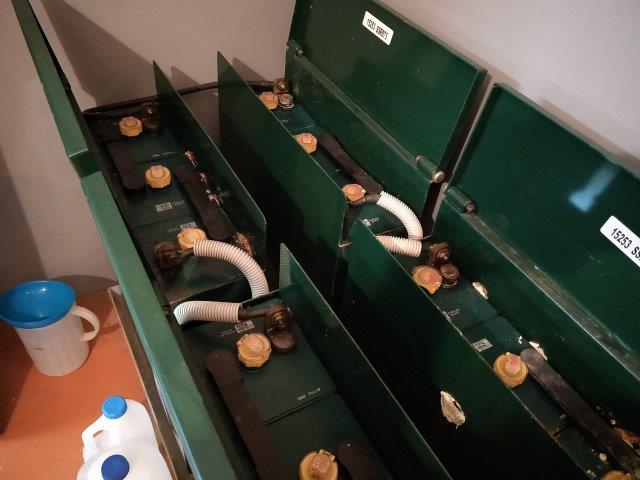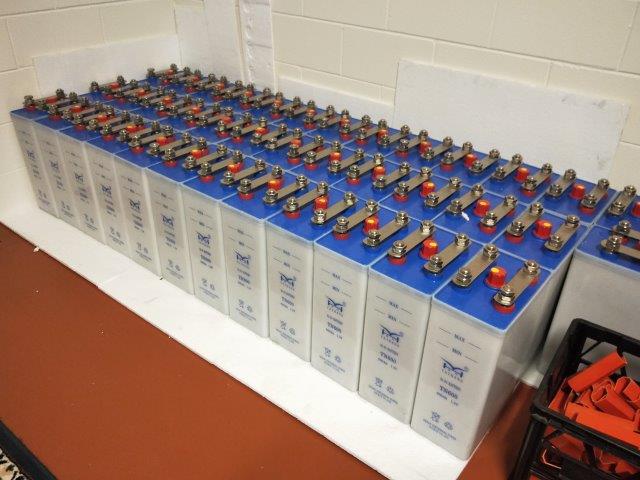
Lead Acid Solar Batteries
Is It Worth Me Buying Solar Batteries For My Home?
No it is not. That is no it is not worth buying solar batteries at this time if you have access to electricity from the Australian electricity grid or even electricity from a less expensive supplier.
This is starting to look like the shortest blog I will probably ever write.
The occasional article on some popular TV show may allude to the promise that you can get your electricity for free if you buy batteries. If it costs $10 to go and see a movie but you know someone who works at the cinema who says if you slip him $20 he’ll let you in for free, do you think that’s a good deal for you or the cinema?
So let’s look at some real-life figures. I’m happy to share with you the experience I’ve had with batteries used in home stand-alone systems since 1996. The industry standard has been, and still is “lead acid” deep cycle batteries. A fellow by the name of Voltar as far back as 1800 discovered that particular liquids could be used to generate a flow of electrons which Gaston Planté, a French physicist, was able to further develop into a rechargeable battery in 1859.
This is by no means a new technology but is has continued worldwide as an industry standard for a very long time. Lithium Ion batteries are the new kids on the block and Lithium being the first metal on the periodic table makes it is the lightest. As a result, the lightness of Lithium Ion batteries has made it possible for people to carry telephones and other amazing electrical gadgets around the countryside.
Where weight is not a factor, such as starting internal combustion engines or even storing electrical energy, (which is actually stored as chemical energy) lead acid batteries are the go to batteries. Cost and reliability are two good reasons why this technology is still in use.
Elon Musk’s exercise down in South Australia using Lithium Ion batteries for storing energy to be used in homes is still in its infancy. Let’s leave a little breathing space to see whether it has been a cost-effective exercise. According to Ian Plimer, should the electricity supplied by coal-based generators in South Australia immediately cease, there would be about four minutes of electricity for everyone to tap into.

NiFe Solar Batteries
If that’s true it probably wouldn’t be enough. He has written a few books not necessarily highly visible in the popular media but always controversial. In his last book entitled “The Climate Change Delusion and The Great Electricity Rip-off” written from an Australian’s citizens perspective, he asks;
“How did one of the world’s largest exporters of coal, gas and uranium end up with unreliable and expensive energy? Massive subsidies for renewable energy, gaming of the electricity market and government mandates have closed coal-fired generators that previously provided cheap reliable electricity. Five hundred years ago, Martin Luther objected to indulgences. Today indulgences are sought as subsidies from consumers for renewable energy generators in the name of the environmental religion”.
I’m certainly not getting involved in any of that here. Let’s patiently wait to see what the future brings in that regard but let me add that anything is always more affordable if someone else pays for it. That is, if some else pays for some of it via a subsidy.
After a number of smaller stand-alone systems that we put on sheds that we “weekended” in beginning in 1996, the building of our new home qualified us to be successful in our application for a slightly more than a 50 per cent subsidy on a $30,000 stand-alone solar home energy system. It had 1.6 kW of collection, 42 kWh of electrical storage in a 48 V system and a 2 kW inverter.
Our system became functional in June of 2001. It was the sole electricity supply to our home until 2012 when we installed a 5 kW interactive system. The old system still supplies power to the sheds and still gets a fair hiding. The batteries used in that system generally last five to seven years or perhaps ten if you are incredibly lucky.
Those batteries are now well into their eighteenth year and do not perform as new ones but they are still very functional. Even with our batteries lasting two to three times longer than they normally last other families (I attribute their longevity to a specific maintenance program) and including the incredible subsidy that we were afforded, it would have been infinitely less expensive for us to have purchased electricity from the grid than from these batteries. In June 2018 I calculated that if that system stopped working at the end of the month, and we had averaged using eight kilowatt hours per day, each kilowatt hour that we would have used would have cost us 33.5 cents.
When we put the system together in 2001 a kWh cost 12.5 cents. If mains electricity had stayed at the same cost per kilowatt hour, electricity from that system would have cost us three times as much as we could have purchased it from the grid. Soon after that system became functional the cost of a kWh rose to more than 14 cents and has more than doubled since then.
In a nutshell, we only paid half the retail cost of our batteries when we purchased
them. Because of careful cycling, regular servicing and a regime to reduce
sulphation, they have lasted two to three times longer than the average family
would have expected. The reality is, anyone else would have paid more
than six times more per kilowatt hour than we did. >>> LEARN MORE >>>
Yes the system is still working so the cost per kilowatt hour will come down marginally a little more yet, but I can assure you that there is no way that we used eight kilowatt hours per day on a regular basis from that system over the last 18 years. To replace those same batteries now will cost around $12,000. That’s marginally cheaper than when we purchased them in 2001. The panels and inverter would certainly be more efficient and less expensive, BUT, even if we were afforded another 50% subsidy, and we follow the same regime expecting to get the same longevity that we extract the last time, it would not be financially viable to store electrical energy in a battery with the cost being significantly higher than purchasing electricity from the grid.
Lead acid batteries are the industry standard and it is not commercially viable to use them to store electrical energy if grid power is readily available. Lithium Ion batteries haven’t proven themselves to be economically viable as yet in this application, and whilst I certainly have an opinion on them, let’s wait to see the test results. Now there are other options but I will talk about those in a future post. Is it worth buying solar batteries to store energy in your home?
No it is not.
John Lynn
Suburbanoffgidliving.com
